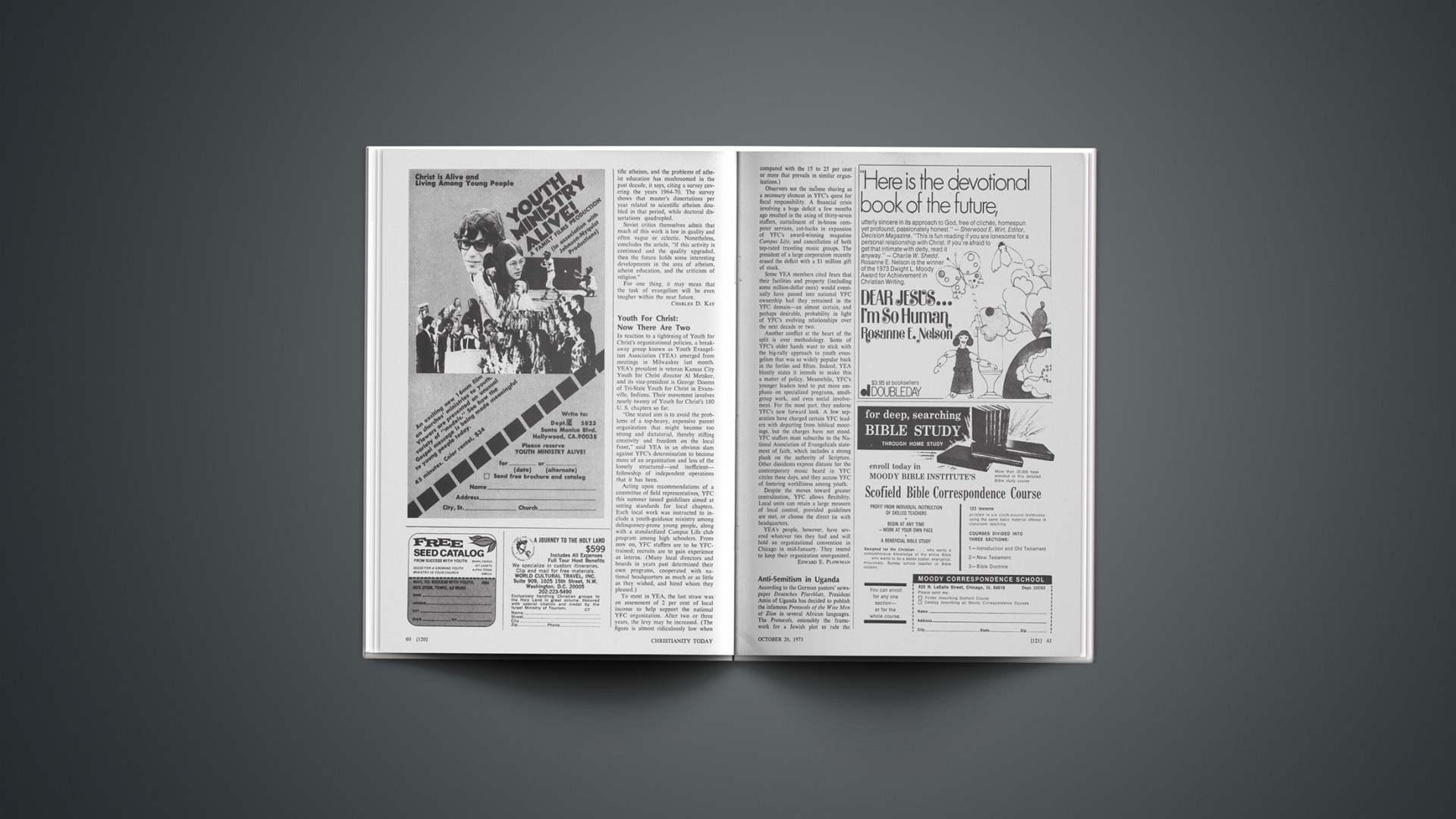Blessed is the preacher who listens attentively to other public speakers, for he shall profit from their wisdom. Times without number this pastor’s drooping spirits have revived under the preaching of an E. Stanley Jones, a J. Sidlow Baxter, or an Alan Redpath. Hearing pulpit masters like these not only lifts me spiritually but also brings a note of freshness into my ministry. I owe it to my congregation to listen to great biblical preaching.
Occasionally my exposure to public speakers brings another kind of benefit. I may become aware of a flaw in the man’s delivery—some annoying habit that robs the message of its power. While seated in the audience I catch myself whispering to the preacher inside me, “Am I guilty of that mannerism? Is my congregation as distracted by my pulpit habits as I am by this speaker’s?”
While on vacation last summer my family and I attended a worship service in a Midwestern town. The young pastor, a recent seminary graduate, had obviously spent many hours preparing the sermon. His exposition of Scripture was thorough, and he applied the passage to our lives, but my attention wandered. Then I recognized the problem. The pastor was afflicted with a severe case of pulpit mannerisms. He had strong convictions about his subject, but his energy wasn’t being expressed in forceful gestures. Instead, his feelings were dissipated in a wide variety of shrugs and jerks.
I decided to catalogue his mannerisms for my own future reference. The young man swayed from side to side like a strap-hanging commuter in rush-hour traffic. He pulled compulsively on his left ear lobe and rubbed his nose until mine started to itch. By the time he arrived at his third point he was scratching the top of his head in an abstracted manner. The man was actually preaching two sermons, one with his voice and the other with his body. Most of us concentrated on the latter. That morning I learned how nervous mannerisms can blunt the effectiveness of a well-planned sermon.
Most ministers will recall that their basic homiletics course included at least one lecture on “Everything You Wanted to Know About Mannerisms But Were Afraid to Ask.” We were taught to be natural before a congregation, as if we were conversing with a friend. But it doesn’t feel natural to stand on a platform and speak to a crowd, so many of us develop nervous actions.
There are facial mannerisms such as the smile or frown that never changes, no matter what the mood of the message. When a speaker’s face is frozen in a smile the audience may doubt his sincerity. If he always frowns the people may consider him belligerent.
Many mannerisms result from poor eye contact. We have all observed the speaker who stares out a window, gazes at the floor, or casts his eyes upward as though he doesn’t trust the ceiling. There are nervous speakers whose shifty eyes give the impression that they are afraid of exposing their real thoughts and feelings. Good eye contact adds an important dimension to preaching. Listeners get the feeling that the preacher has something important to communicate to each one.
Most distracting mannerisms involve the hand. Do you tug at an article of clothing? Fold your hands behind your back? Frequently remove and replace your glasses?
I once attended a concert where the guest pianist used the brief intervals when the orchestra played without him to dab at perspiration with a collection of colored handkerchiefs. He never went to the same pocket twice, and wouldn’t replace the handkerchief until a split second before joining the orchestra again. Those who knew when the piano was supposed to come in held their collective breath while the virtuoso dabbed away at his bald head. He didn’t miss a beat, but the audience was so intent on his mannerism that we missed out on the beautiful orchestral playing.
Many preachers need an occasional reminder that putting hands into pockets is forbidden. This practice gives the impression of carelessness and laziness. The audience gets a message that the speaker isn’t free and confident. Besides, pocketed hands cannot be used for meaningful gestures.
A preacher may be unaware of his mannerisms; he may need to ask someone in the congregation to watch for them. Then the place to begin curing them is with attitude. Natural gestures accompany the natural expression of feelings. When a speaker becomes inhibited in the expression of these deep feelings he is easy prey for mannerisms.
It is often helpful to practice a message before a mirror. But be positive in your rehearsal. Instead of trying to catch those nervous mannerisms, concentrate on gestures until they feel graceful and natural to you.
Have something to do with your hands. A speaker whose hands are not under control appears uncomfortable, and an uncomfortable speaker makes for an uncomfortable audience. When not in use, hands should rest quietly at the speaker’s sides.
Watch other speakers in action, not only public speakers at meetings but actors and other speakers on television. You may want to turn down the sound and just observe their movements. Several speech therapists advise speakers to study cartoons in papers and magazines. Cartoonists tend to exaggerate bodily action.
Paul S. Rees offers a final word of advice. “Let preachers remember that visible details have a strange power over listeners. The hand may be a friend or a foe to sermonic effectiveness.”—The Rev. DAVID S. MCCARTHY, Advent Christian Church, Somerville, Massachusetts.










